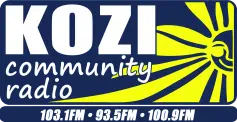▶ Watch Video: NTSB arrives in NYC for Brooklyn Bridge crash investigation
The National Transportation Safety Board gave its first update in its investigation of the Mexican navy ship that crashed into the Brooklyn Bridge over the weekend.
The NTSB is still waiting for permission from the Mexican government to gain access to the Cuauhtémoc, which remains docked at Pier 36 following the fatal collision.
Timeline of ship’s movements before Brooklyn Bridge collision
Federal transportation safety investigators will be looking into whether wind and tide played roles when the masts of the Cuauhtémoc, a 300-foot training ship, collided with the Brooklyn Bridge.
Investigators said the vessel departed Pier 17 with a tugboat and increased it’s speed just before the crash Saturday.
“We will look at the status of engine, we’ll look at any failures, we’ll look for engine inspections, and we’ll talk to the crew on what may have possibly occurred with the engine,” said Brian Young, a marine accident investigator for the NTSB. “We are going to be accessing all of the different electronic data to determine at what point the vessel began accelerating.”
Officials provided a timeline of the incident, which they said started when the ship pulled away from a dock to sail down the East River.
- 8:20 p.m. – the ship began backing away with the assistance of a tugboat
- 8:24 p.m. – there was a request for assistance from other tugboats
- 8:24 p.m. – 45 seconds later, the ship struck the Brooklyn Bridge
- 8:27 p.m. – the ship came to a stop
- 8:30 p.m. – FDNY and NYPD assets were on the scene
NTSB Board Member Michael Graham said a preliminary report would be available in about 30 days.
“This is the start of a long process. We will not be drawing any conclusions. We will not speculate. We will also not be determining the probable cause while we’re on scene,” Graham said. “We are here to gather perishable evidence, and that’s what we will be doing the whole time we will on scene. And that’ll take as many days as it needs to be.”
The NTSB asked members of the public to email witness@ntsb.gov if they have video of the collision, but not to send the file until they respond.
The Brooklyn Bridge has been deemed structurally safe.
Victims identified in Brooklyn Bridge ship crash
Officials said 277 people were aboard the Cuauhtémoc when it crashed during a ceremonial departure to Iceland. Video showed all three masts snapping off when they hit the bridge and some crew members dangling from harnesses and holding onto wires.
A total of 22 crew members were injured, including two who died and two who remain hospitalized in New York. Most of the crew are back in Mexico.
Mexican authorities identified the victims as 20-year-old cadet América Yamilet Sánchez and Adal Jair Maldonado Marcos. Mourners have been leaving lowers and candles at Pier 36 to pay their respects.
Sanchez’s family members spoke out Sunday as they mourned her loss. Her aunt questioned why the Mexican navy has not done more to bring the family to New York to recover her body. Another relative called videos of the crash illogical and said it should not have happened.
Maritime experts said it is sometimes customary for sailors to stand in formation on the vessel’s yards when leaving a harbor, which is what was believed to be happening on the Cuauhtémoc. But they said there are some questions that need to be answered.
“Were the anchors ready to be let go? That’s one thing. If the engine continued to go astern, then is there a procedure for shutting down the engine? In most ships, there are,” said Capt. James Staples, a maritime expert not involved in the crash.
DHS says Schumer should “get his facts straight”
The U.S. Department of Homeland Security has responded to Senate Minority Leader Chuck Schumer’s concerns about whether cuts by the Department of Government Efficiency, or DOGE, may have been a factor in the incident. The DHS said in a social media post the senator’s questions of a hiring freeze and inadequate staffing are “false.”
“The US Coast Guard has been fully supported and been exempt from hiring freezes. Additionally, this incident had nothing to do with Vessel Traffic Services— when a ship loses propulsion in a high current area, the vessel needs to engage all capabilities to stop and ideally tugs are nearby to support,” the post read. “We encourage Minority Leader Schumer to get his facts straight before he misleads the American people.”
During his weekly press briefing Sunday morning, Schumer explained the Coast Guard has a system called vehicle traffic service, or VTS, which is similar to FAA air traffic control.
“There are indications that this service called the VTS may not have been fully or adequately functional in light of that hiring freeze. We don’t know the answer to that question. We need answers. If this were the case, Brooklyn Bridge accident could be a national harbinger, demanding immediate attention,” he said.
Schumer pointed to Admiral Linda Fagan being relieved of her duties as commandant of the Coast Guard on Jan. 21.
“Furthermore, the current hiring freeze at the Department of Homeland Security, DHS, which the Coast Guard is part of, may have limited the ability of the Coast Guard to fully staff up at the VTS, the vehicle traffic service, the shore-wide system that provides quote air traffic control for the seas, especially in congested areas and restricted waters like New York Harbor,” he said.
The U.S. Coast Guard issued a statement Sunday saying the VTS “was fully functional during the incident, operating in accordance with established procedures to manage commercial traffic and facilitate safe navigation. Our response included launching a crew from Station New York, establishing a temporary safety zone, and coordinating with NYPD, FDNY, and NYC DOT.”














